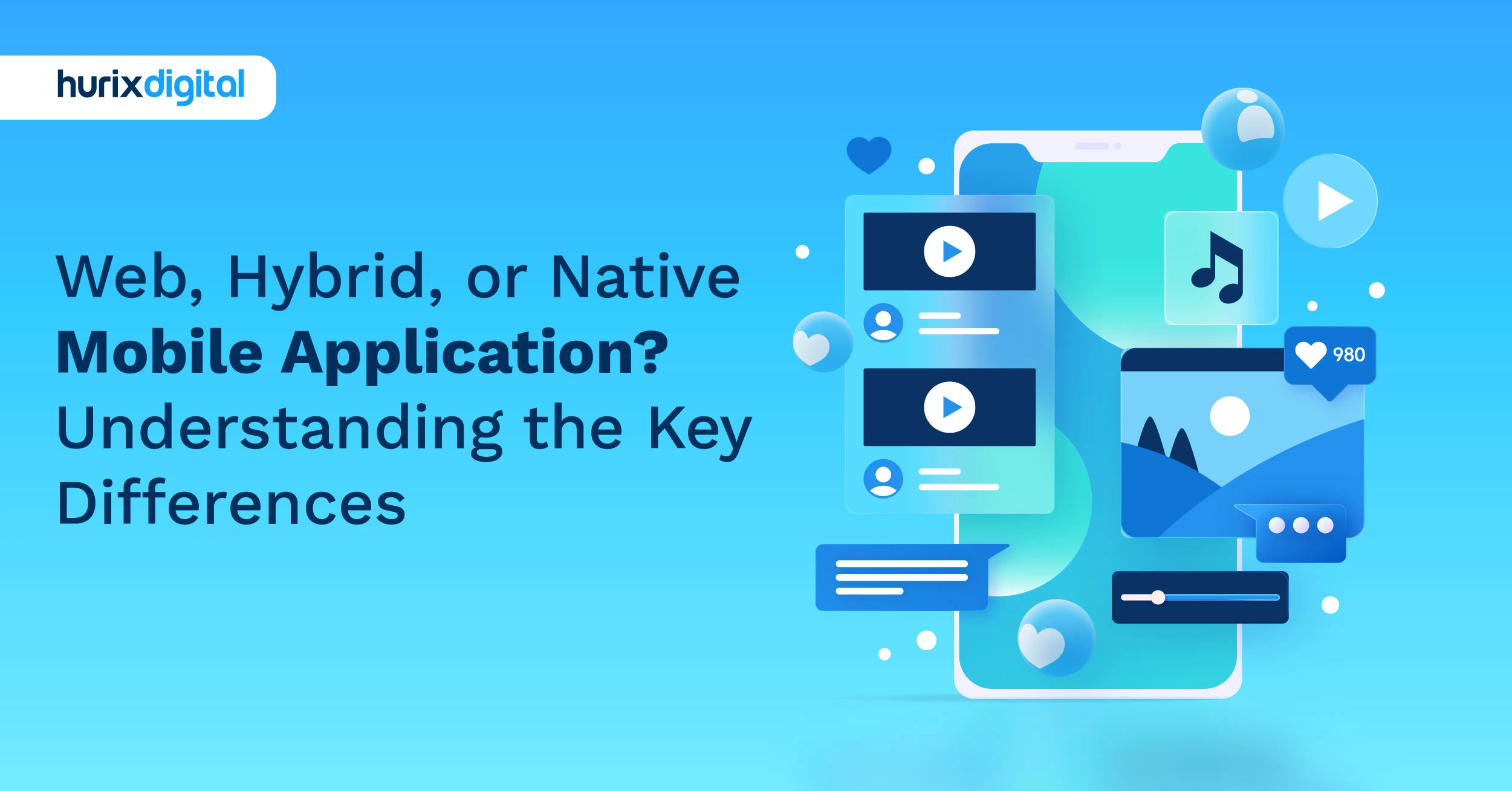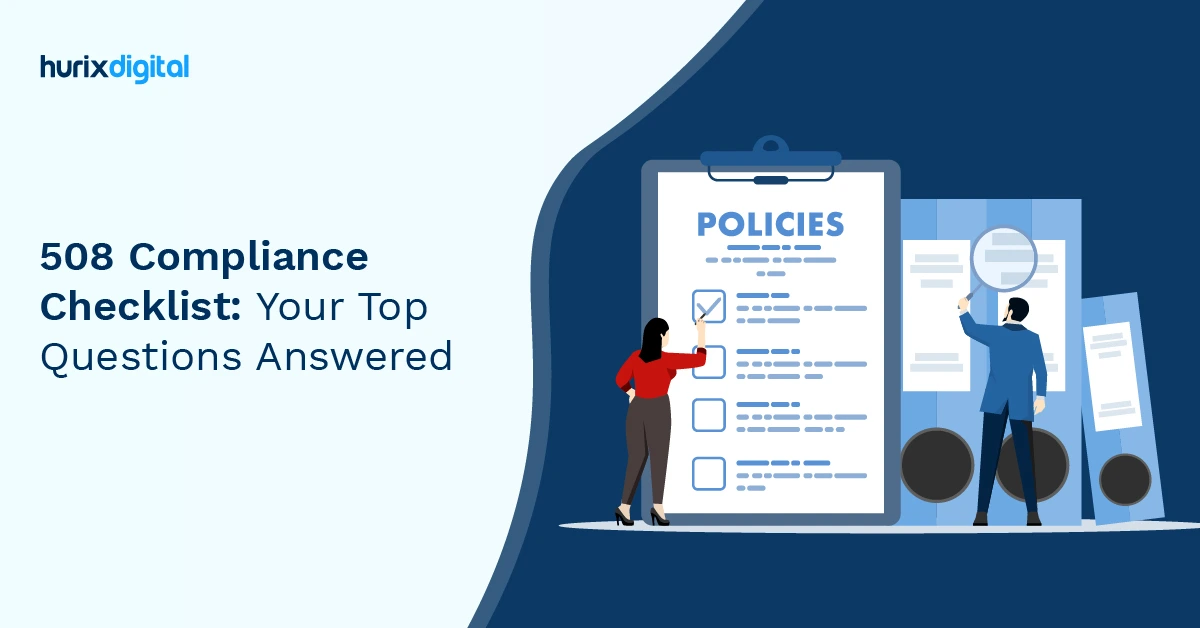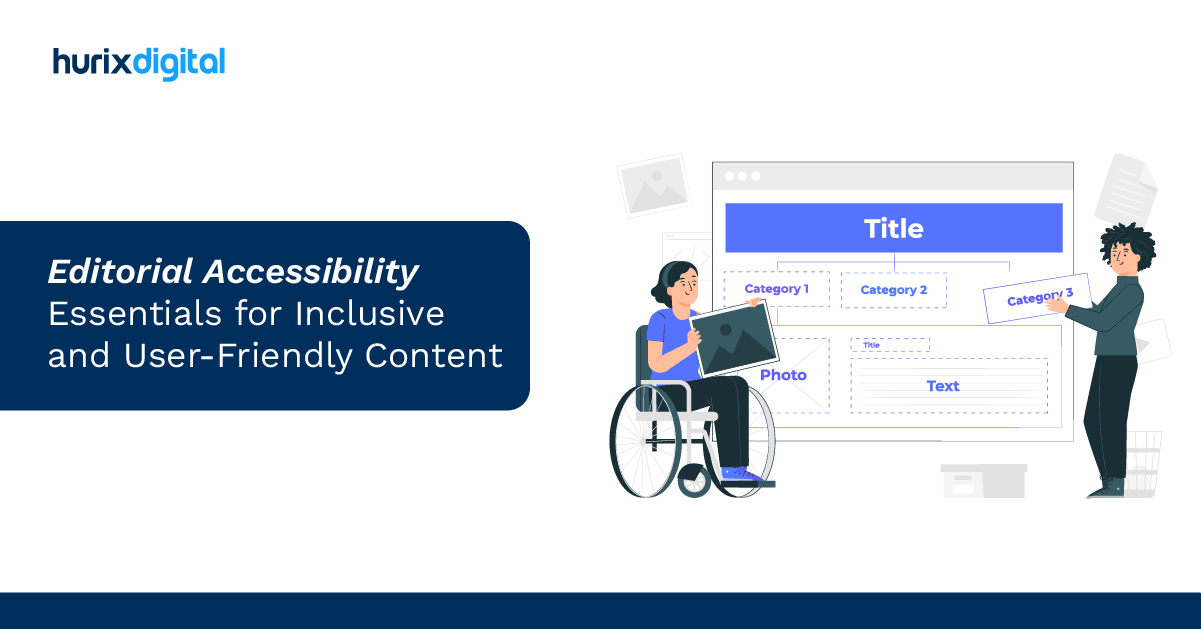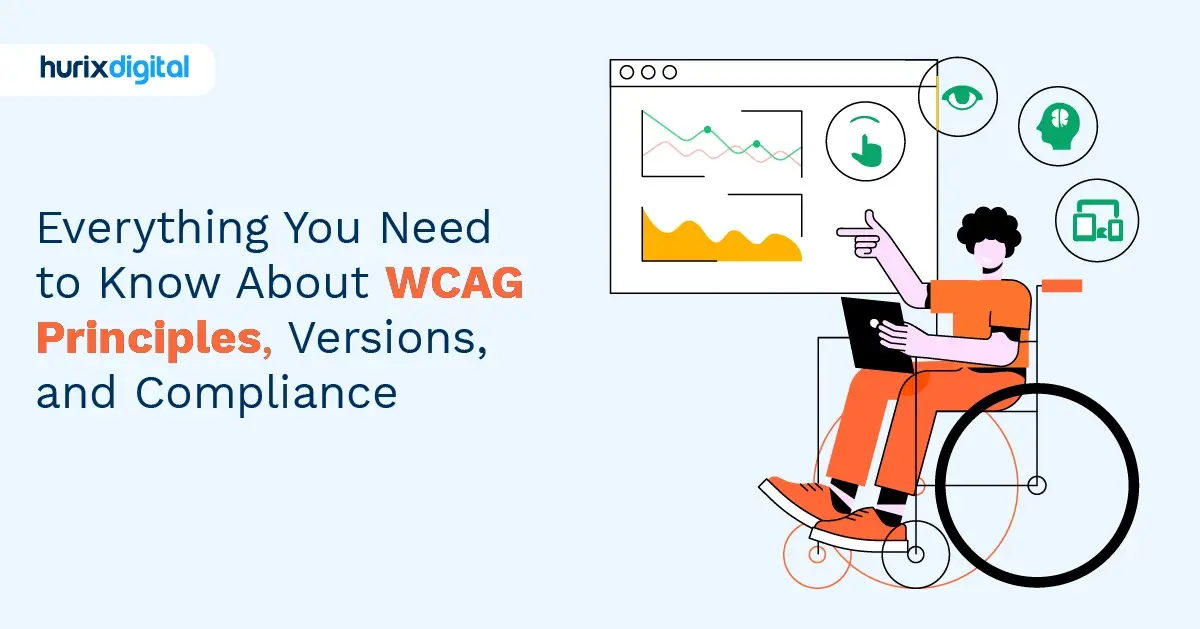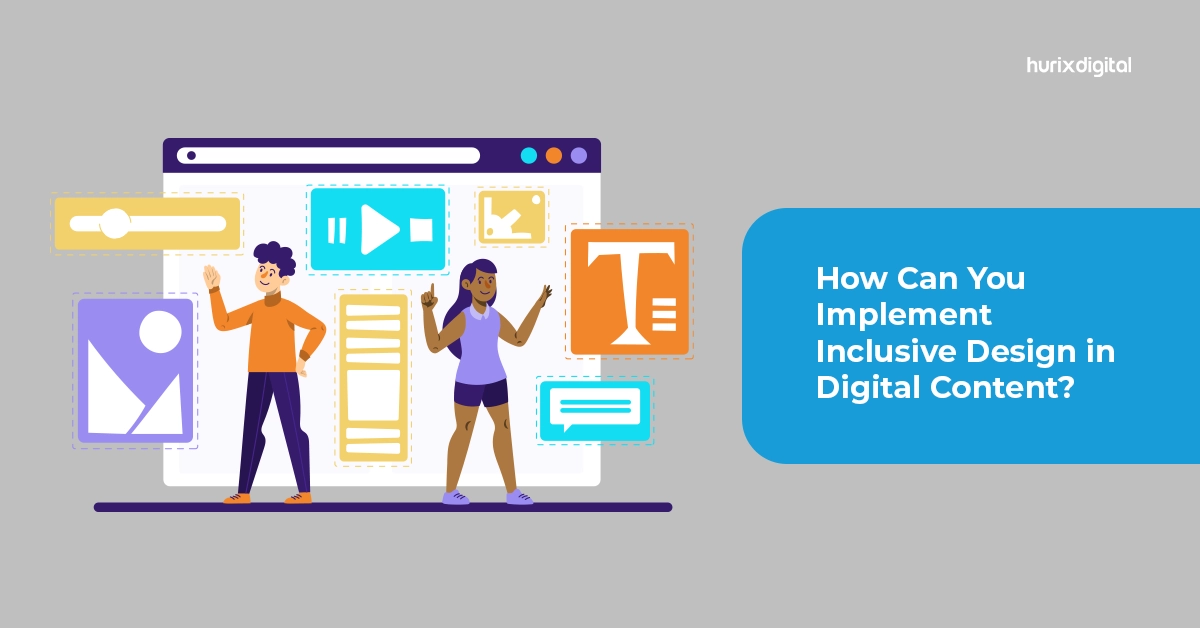
How Can You Implement Inclusive Design in Digital Content?
Summarize with:
According to a study, as many as 71% of web users will leave a website if it’s too difficult to navigate or lacks appropriate accessibility features. These stats can be daunting for anyone who runs an online business. But then again, do users judge website inclusivity only through its landing pages? Absolutely not!
Digital content consumption is on the rise. With millions of people using eBooks, articles, blogs, courses, etc., daily, optimizing the digital content of a website is just as necessary as optimizing everything else. If your digital content is not augmented for inclusivity, offering a seamless user experience is impossible.
But the question is—how can one do so?
Well, this blog answers this question for you. Read on as we discuss the significance of inclusive design for digital content and lay down steps to help you create one for your website. Let’s start!
Table of Contents:
- What is Inclusive Design for Digital Content? What Are Its Components?
- What are the Benefits of Creating Inclusive Design for Digital Content?
- How Can You Create Inclusive Design for Your Digital Content? 5 Effective Tips!
- Wrapping Up
What is Inclusive Design for Digital Content? What are its Components?
The term “inclusive design” is self-explanatory—a design that’s inclusive in nature. Think of a digital content piece that can be accessed and consumed by both individuals with and without disabilities—with the same ease and efficiency. Yes, that’s an inclusive digital content piece. Here are some of its core components:
1. More Accessible
More than 96% of the world’s top one million web pages lack proper accessibility. However, inclusive digital content is highly accessible. It can be used and interpreted by anyone, irrespective of their physical disability. You can easily spot them by their thoughtful design. Such content pieces are equipped with elements like alt texts, images, captions, and other nitty-gritty that support comprehensive inclusivity.
2. User-Centered Design
One quality that you will find common in all digital content pieces with high inclusivity is user-centricity. These pieces are designed with the user’s diverse needs in mind. They demonstrate versatility and are tested for being appropriate in terms of functionality for all kinds of audiences.
3. Customizable
Inclusive digital content boasts a responsive design. This is why it’s also much more customizable than a regular digital content piece that’s not optimized for inclusivity. As a user, you can easily personalize an inclusive digital content piece to fit your needs. There’s always sufficient room to accommodate personal preferences.
4. Includes Assistive Technologies
Another quintessential characteristic of inclusive digital content pieces is that they include assistive tech support. Right from screen readers to text-to-speech tools—this content type consists of all kinds of supplementary tools and features someone with a physical limitation may need to utilize the content.
5. Legally Compliant
Last but never least, inclusive digital content pieces are always legally compliant. They are fabricated on par with global accessibility standards and guidelines, so they also ensure your business never faces any sort of legal challenges.
Also Read: The Beginner’s Guide to Accessibility Remediation – What You Need to Know!
What are the Benefits of Creating Inclusive Design for Digital Content?
We’re pretty sure that by now, you must have gauged some of the benefits of creating inclusive design for your digital content. But just in case you haven’t, we’ve listed down five of them:
1. Wider Reach
By making your digital content available and accessible for all, inclusive design amplifies its reach. Expect to see a whopping increase in your audience when you add the essence of inclusivity to your content design.
2. Enhanced SEO
Inclusive digital content pieces are highly SEO-friendly. They contain elements like meta tags, descriptions, etc., and perfectly align with SEO principles to make your content rank higher on SERPs.
3. Improved User Experience
Inclusive design for digital content is known for enhancing user experience. It is laced with features that make content navigation easier and multi-device compatible. In fact, it also makes the user experience more intuitive and engaging.
4. Positive Brand Image
A recent survey revealed that over 36% of people have boycotted a brand at some point because of issues with diversity and representation. However, by incorporating inclusive design elements into your digital content, you can easily position yourself as a brand that prioritizes inclusivity. This helps create a positive public image of your business.
5. Future-Proof
Inclusive design for digital content is not a fleeting trend. As we approach a world that embraces diversity in all walks of life, it’s become a necessity. Thus, ensuring inclusivity in your digital content pieces can help make them future-proof.
How Can You Create Inclusive Design for Your Digital Content? 5 Effective Tips!
Here are some beginner-friendly tips you can follow to create an inclusive design for your digital content:
Tip 1: Follow the Principles of Inclusive Design
The concept of inclusive design for digital content is largely based on the pillars of accessibility and perceivability. So, before you start creating the design structure, understand how you can optimize it on these grounds. Basically, figure out areas where you can ease accessibility and comprehension for your audience.
Tip 2: Understand Audience Needs
To effectively serve a diverse audience pool, you must start by understanding what they need. The idea of design inclusivity is subjective and changes from person to person. But then again, adding each of those diverse elements is impossible. So, conduct a thorough research and gather as much data and feedback as possible. This will narrow down the options and establish a clear starting point for you
Tip 3: Follow Accessibility Guidelines
Web Content Accessibility Guidelines (WCAG) are a set of standards that facilitate web accessibility for online businesses. It serves as a handbook for beginners trailing on the path of creating an inclusive, seamless user experience for their audiences. You can also refer to them to create an inclusive design for your digital content.
Tip 4: Leverage Multimedia
When creating the blueprint of your inclusive design, make sure to add multimedia elements. This includes visual and audio components like images, graphics, animation, music, etc. This not only augments content engagement but also makes your digital content much more comprehensible, appealing, and interactive.
Tip 5: Integrate Assistive Technology
Inclusive design creation for digital content is incomplete without the presence of assistive technology features. So do not forget to incorporate them. To begin with, you can leverage common ones like screen readers, screen magnifiers, text-to-speech software, etc.
Check out EXCLUSIVE: Hurix Digital Generates Alt-Text for 18,000 French eBooks for a Leading European Academic Publisher
Wrapping Up
In today’s world, where more and more businesses are positioning themselves as an inclusive organization, creating an inclusive design for digital content can help you join the bandwagon. That’s not all. This one small step can also help you take a big leap in terms of reach and brand awareness.
So, what are you waiting for? Choose a digital accessibility platform and recreate your digital content design to make it inclusive. Become a future-ready business today!
In this context, you can definitely check out Hurix Digital. With our cutting-edge Accessibility Solutions, you can easily create easily accessible, inclusive, and compliant digital content minus the hassle.
Summarize with:

Vice President – Content Transformation at HurixDigital, based in Chennai. With nearly 20 years in digital content, he leads large-scale transformation and accessibility initiatives. A frequent presenter (e.g., London Book Fair 2025), Gokulnath drives AI-powered publishing solutions and inclusive content strategies for global clients
 Upcoming Masterclass | Build an Army of Brand Evangelists using Training & Development | November 20th, 8:30 AM PDT | 11:30 AM EDT | 10:00 PM IST
Upcoming Masterclass | Build an Army of Brand Evangelists using Training & Development | November 20th, 8:30 AM PDT | 11:30 AM EDT | 10:00 PM IST

